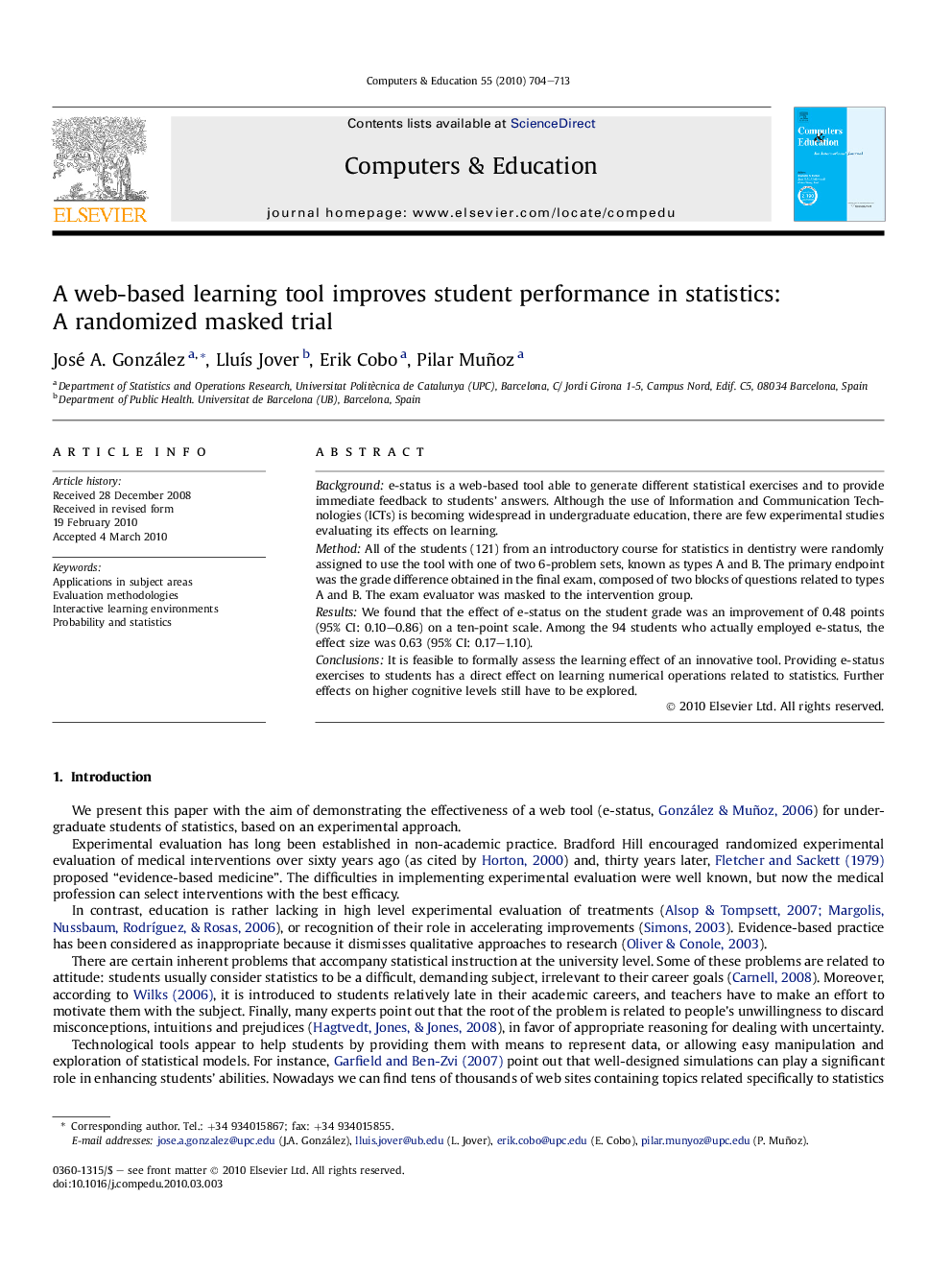| Article ID | Journal | Published Year | Pages | File Type |
|---|---|---|---|---|
| 349139 | Computers & Education | 2010 | 10 Pages |
Backgrounde-status is a web-based tool able to generate different statistical exercises and to provide immediate feedback to students’ answers. Although the use of Information and Communication Technologies (ICTs) is becoming widespread in undergraduate education, there are few experimental studies evaluating its effects on learning.MethodAll of the students (121) from an introductory course for statistics in dentistry were randomly assigned to use the tool with one of two 6-problem sets, known as types A and B. The primary endpoint was the grade difference obtained in the final exam, composed of two blocks of questions related to types A and B. The exam evaluator was masked to the intervention group.ResultsWe found that the effect of e-status on the student grade was an improvement of 0.48 points (95% CI: 0.10–0.86) on a ten-point scale. Among the 94 students who actually employed e-status, the effect size was 0.63 (95% CI: 0.17–1.10).ConclusionsIt is feasible to formally assess the learning effect of an innovative tool. Providing e-status exercises to students has a direct effect on learning numerical operations related to statistics. Further effects on higher cognitive levels still have to be explored.
